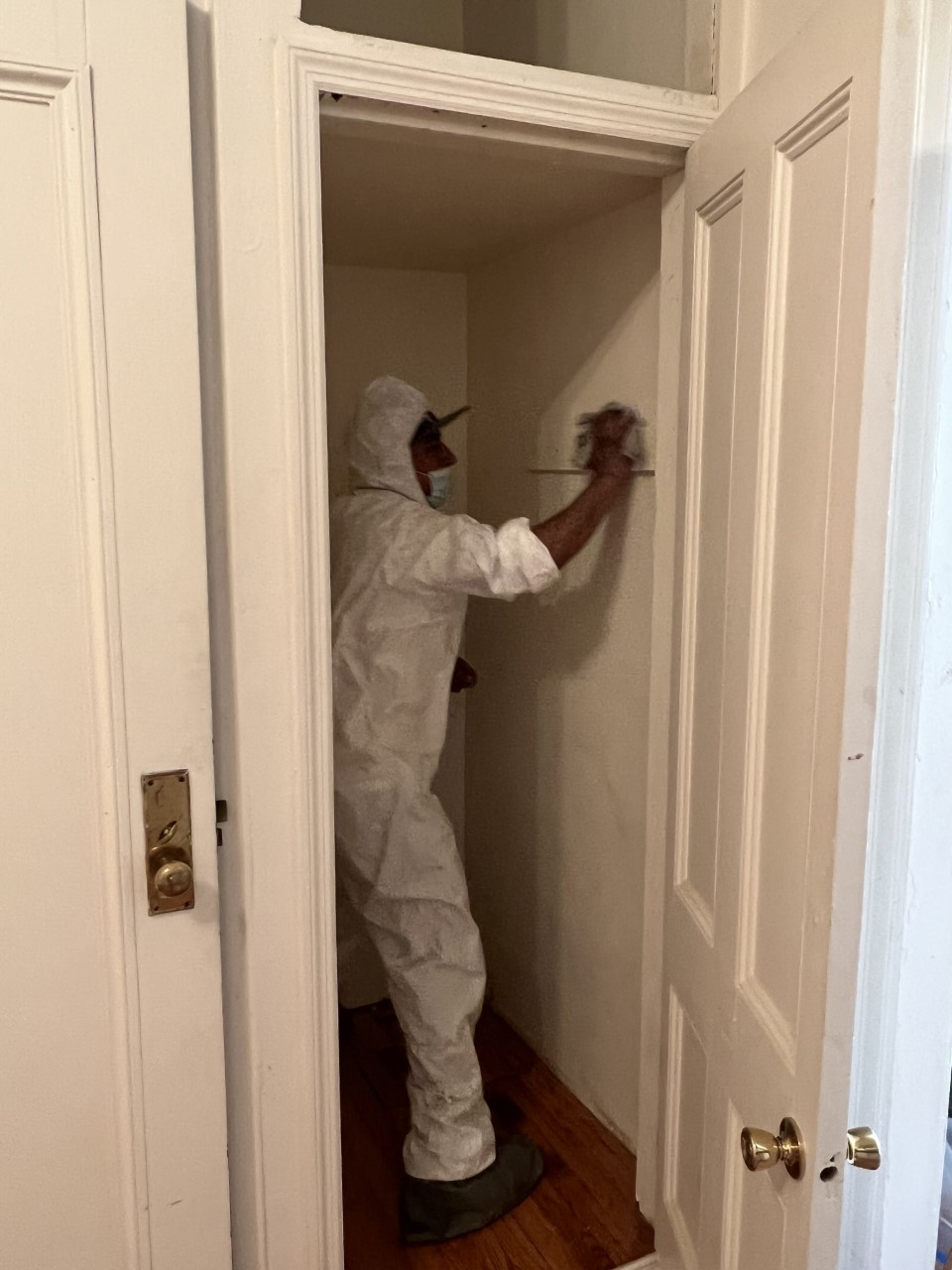Comprehensive Lead Paint Removal Service in NYC-- Accredited and Qualified
Comprehensive Lead Paint Removal Service in NYC-- Accredited and Qualified
Blog Article
Comprehensive Guide on Effective Lead Infraction Removal Methods
In the realm of environmental safety, dealing with lead infractions demands a thorough and organized method. This extensive overview begins by highlighting the critical preliminary steps of determining lead hazards through innovative assessment and testing techniques. The guide clarifies on the importance of sticking to strict safety methods throughout the removal process, consisting of the use of proper PPE and isolating influenced areas.
Determining Lead Risks
Identifying lead hazards is a critical initial step in minimizing the dangers related to lead direct exposure. Lead, a hazardous steel, can be existing in various ecological mediums, including paint, soil, water, and dirt. It presents extreme wellness risks, specifically to kids and expecting females, leading to neurological damages and developing delays. Therefore, specific recognition of potential lead resources is crucial for reliable removal.
The initial stage in identifying lead threats includes recognizing usual lead resources within the developed atmosphere. Structures developed before 1978 are particularly vulnerable due to the widespread use lead-based paint throughout that duration. Additionally, dirt contamination can happen from degrading exterior paint, industrial emissions, or historical use leaded gas.
Another substantial resource is lead piping and plumbing components, which can seep lead into alcohol consumption water. Durable goods such as playthings, ceramics, and imported items may likewise include harmful lead degrees. Significantly, work-related settings and hobbies involving lead can track contaminants into homes.
Evaluation and Screening
When dealing with lead hazards, effective analysis and testing are vital. Preliminary analysis normally entails an aesthetic examination to identify potential lead resources, such as wearing away paint or polluted dust.

Dirt wipe sampling is one more important method, especially in household settings. By accumulating examples from floorings, windowsills, and other surfaces, this approach provides understandings right into potential exposure threats. Moreover, dirt testing around structure perimeters is vital to detect lead contamination that could position hazards, particularly to kids.
Safe Removal Procedures
Upon completing comprehensive analysis and screening, carrying out secure elimination procedures is the next vital phase in dealing with lead hazards. This procedure guarantees that lead-contaminated products are successfully and securely removed, lessening threat to both employees and residents. The initial step involves separating the affected area utilizing plastic bed linen and proper securing methods to stop the spread of lead dust.
Employees need to put on ideal individual protective tools (PPE), consisting of respirators, handwear covers, and non reusable coveralls, to alleviate direct exposure. Utilizing specialized devices and damp techniques, such as damp sanding or using HEPA-filtered vacuum cleaners, lowers the dispersion of lead particles. It find out here is essential to stay clear of dry sanding or abrasive blasting, as these methods can generate damaging lead dirt.
Waste disposal is one more important part; all infected materials need to be safely landed and labeled according to EPA and regional laws. Additionally, extensive cleaning of the workplace with HEPA vacuum cleaners and wet cleaning ensures the removal of residual lead bits.
Post-Removal Verification

Verification of successful lead removal, referred to as post-removal confirmation, is crucial to guarantee the security and habitability of the remediated area. This procedure entails a collection of careful assessments and examinations created to discover any type of recurring lead fragments that might present health and wellness threats. The preliminary action usually consists of an aesthetic examination to assess the completion and quality of the remediation job. This assessment guarantees that all known sources of lead have actually been addressed which no visible indicators of contamination stay.
Complying with the visual assessment, environmental tasting is performed. This includes accumulating dust, dirt, and occasionally water examples from the remediated location. Recognized laboratories evaluate these samples to gauge lead levels, guaranteeing they fall listed below the security thresholds developed by regulative bodies such as the Environmental Protection Agency (EPA)
On top of that, air quality testing might be performed to spot air-borne lead bits, especially in situations where considerable lead-based paint elimination or renovation has happened. The results of these examinations provide measurable information validating that the lead degrees are within allowable restrictions.
Inevitably, post-removal confirmation acts as a crucial checkpoint, verifying the performance of the lead reduction efforts and securing the health and wellness of occupants and visitors.
Safety Nets and Upkeep

A key preventative step consists of making use of lead-safe accredited contractors for any type of renovation, repair service, or painting activities. These professionals are trained in techniques click resources that decrease lead dust and debris. Furthermore, preserving colored surfaces to prevent cracking or peeling off is vital, as wearing away paint can launch lead particles right into the atmosphere.
Educational efforts targeting homeowner and occupants relating to the threats of lead and the relevance of reporting any prospective hazards can even more boost preventive efforts. Regular cleaning utilizing HEPA vacuum cleaners and damp mopping methods can substantially reduce lead dirt buildup.
Conclusion
In summary, efficient lead offense elimination requires a careful technique including thorough evaluation, exact screening, and rigid removal treatments. Making certain safety and security through correct isolation and individual safety equipment stays vital. Post-removal confirmation through ecological sampling and air top quality testing substantiates conformity with well established safety and security criteria. Furthermore, ongoing examinations and upkeep are important to reduce future lead threats, therefore guarding public wellness and ensuring continual conformity with governing demands.
Report this page